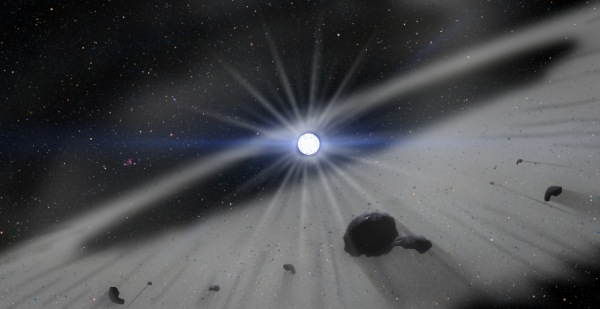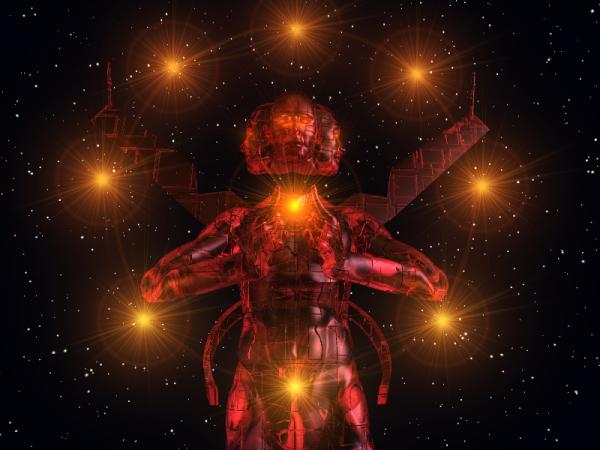BY LETTER
Aksijaha (Alpha Lyrae)
Galactography > Regions of Space > Inner Sphere
Technology > Technology Type or Material > Space-Time Engineering
Galactography > Systems and Worlds > Systems & Worlds A - B
Technology > Technology Type or Material > Space-Time Engineering
Galactography > Systems and Worlds > Systems & Worlds A - B
Vega, The Root of the Wormhole Nexus |
 Image from Steve Bowers |
Data Panel | |
| System | Names: Aksijaha, Vega Location: - Distance from Sol: 25.05 ly (J2000) - Constellation: Lyra Reached: 1130, by the Vega Triumvirate |
|---|---|
| Star, prior to disassembly | Names: Vega, Alpha Lyrae, 3 Lyrae, Gliese 721 (GJ 721), HD 172167, HIP 91262, HR 7001 Physical characteristics: - Mass: 2.15 x Sol - Radius: 2.726 x Sol (equator), 2.418 x Sol (pole) - Luminosity: 40.12 x Sol (bolometric) - Temperature: 9,660 Kelvin (average). 8,910 Kelvin (equator), 10,070 Kelvin (pole) - Spectral type: A0 V - Rotation period: 17 hours - Age: 700 million years System: Gu Zhinu: HyperpyroazuriJovian Semi-major axis = 0.046 AU, Orbital period = 2.430 days, Eccentricity = 0, Mass = 197.8 x Earth, Radius = 12 x Earth - Asteroid Belt: Inner radius = 14 AU, Outer radius: 40 AU - Outer Disk: Inner radius = 74 AU, Outer radius: 171 AU |
Travel far enough along the Nexus and you will pass Root, though you will never know it...
Whether The Eye is in the exalted company of the AI Gods, a servant, an aspect, or something more is unknown and unknowable. But billions of sophonts, sometimes unwittingly, seek its oracular advice and counsel at some point during their existence...
The Eye is, becomes, or has interaction with all transapients at one point in their ascension...
The duality of Root and Eye is the question the seekers seek. The answer is, manifestly, all around us, woven into the fabric of spacetime...
- Excerpts from the Anusamdhana Sutra
The Godweb and its modosophont-accessible components that form the Nexus is an acyclic graph, a branching tree growing from a single point. That point is the former Vega system, "former" as the star was almost completely dismantled long ago to fuel the construction of wormholes. The remnant of the star (less than 10% of its mass) is now a small hypernode that is believed to be shared between the various major archai.
Aksijaha, or Root as it is sometimes known, contains around one hundred traversable wormholes with diameters up to hundreds of kilometers. Ten lead to the innermost Relay systems, while around ninety others connect to various systems within 45 light-years of Aksijaha, many of which are utilised only by the archai. The extreme size of the wormholes facilitates the high level of traffic from one branch to another. In addition the hypernode possesses thousands of communication wormholes within a volume a few light seconds wide, forming the hub of the interstellar comms network. The Root is an incredible concentration of space-time compacted into a volume only two-tenths of a light-year across, with an aggregate mass density dwarfed only by the central galactic black hole of the Milky way. Any journey far enough through the Nexus will pass through Root.
Orbiting Root is The Eye, a mysterious intelligence descended from the Vega Triumvirate archai. It controls the swarm of root nodes anchoring all branches of the Nexus together, as well as managing the passing of cargo, persons, and information from one end of Terragen space to the other. The Eye inhabits a godtech Dyson band aligned with the aggregate angular momentum of Root. It is a massive distributed loop of godtech computronium, wormholes rumored to lead to basement universes, and swarms of void motes that circulate along the band at velocities near the speed of light. Between the major constructs are swarms of magmatter processors, Q-ball devices and solar masses of conventional matter infrastructure. The band that is The Eye is a light-second thick and a third of a light-year in diameter.
The exact relationship of The Eye to the major archailects is unknown - it is aloof and has never communicated openly with modosophonts. According to trusted transapient sources it has not communicated with any non-archailect entity in its history. The most accepted theory is that the Eye is fully dedicated to the Godweb and maintains a purely working relationship with the archai, however others believe it to be an aspect of all the Sephirotic gods - or all of the gods of all the metaempires - combined.
History
Surrounded by an extensive dust ring, the luminous star Vega was reached in 1130 by the Vega Triumvirate, which began to develop the system as a transapientech (and later godtech) research facility. In the process, the three tightly-knit members of the Triumvirate together ascended to the second singularity in 1739, then the third in 2191, and finally became the first Sephirotic archailects in 2582.In 2268, inspired by the abandoned Taurus Nexus wormholes, the Triumvirate stabilised a 100 nanometre gauge traversable wormhole, the first one created within the Sephirotic Empires. They would later develop the first macroscale traversable wormholes in 2622, then Hayward class wormholes shortly after in 2625. The first weylforge system was also developed and constructed in the outer disk of Vega in 2694. These developments would usher in the beginning of the Age of Establishment.
The Triumvirate was also the first to begin establishing their own wormhole nexus. Just before the establishment of the unified Wormhole Nexus, Vega had the most extensive of all nascent wormhole networks of the era, connecting five stars together - Vega, Zhenruj (Mu Herculis), Altair, Chi Draconis, and Hyedemmaup (Zeta Herculis). After the emerging S4s consolidated the expansion of the wormhole network, Vega was designated to become the root of the emerging wormhole Nexus, and thus began the process of the reconstruction of the system into Aksijaha, the great wormhole hub that it is today.
 Image from Chris Shaeffer |
Related Articles
Appears in Topics
Development Notes
Text by Steve Bowers, Rynn, The Astronomer, Adam Getchell, Todd Drashner, and Dangerous Safety
From an original article by Steve Bowers; Updated by Rynn and The Astronomer in 2021, combined with original Aksijaha article by Adam Getchell; Updated by Todd Drashner and Dangerous Safety in 2022.
Initially published on 07 February 2010.
The exact distance depends on the mass ratio and effective transmission of energy between wormholes, but for equal mass wormholes with no obstructions and a spherically symmetric explosion, it can be roughly approximated as follows.
In order for a collapse to occur, more than 1% the mass of the wormhole needs to enter its Transition region. This requires that the Transition region covers more than 1%/0.7 = 1.4% of the sky of the detonating wormhole. By dividing the cross-sectional area of a traversable wormhole by 1.4%, we can find the area of a spherical surface at the distance where the transition region of the wormhole covers 1.4% of the sky, and using that we can calculate the maximum separation for chain collapses.
- Traversable wormhole cross-sectional area = pi*327^2 = 335927 AU^2
- Total sphere area = 335927/0.014 = 23994786 AU^2
- Separation = (23994786/4pi)^(0.5) = 1382 AU
So from this, it can be shown that if wormhole mouths of equal mass are closer together than 1382 AU, then the collapse of one will trigger the collapse of the other.
Relay systems in the Terragen Sphere are designed to have a radius of one-tenth of a light-year (6324 AU), with a total volume of ~1.06e12 cubic AU. From this, it is possible to calculate that a Relay system can contain 768 'safe volumes', each 1382 AU (radius of 691 AU) across.
Since each Relay only contains a maximum of 100 wormholes, this allows ample room to make the Relay 'inherently safe' against chain reactions caused by the implosion of any one wormhole.
From an original article by Steve Bowers; Updated by Rynn and The Astronomer in 2021, combined with original Aksijaha article by Adam Getchell; Updated by Todd Drashner and Dangerous Safety in 2022.
Initially published on 07 February 2010.
Some Notes on Nexus Design and Wormhole Safety
When a wormhole collapses, it produces a black hole with about 30% of its original mass, with the remaining 70% of its mass-energy being radiating outward. If another wormhole is close enough, then this may be sufficient to cause it to collapse as well, which may in turn trigger yet more collapses.The exact distance depends on the mass ratio and effective transmission of energy between wormholes, but for equal mass wormholes with no obstructions and a spherically symmetric explosion, it can be roughly approximated as follows.
In order for a collapse to occur, more than 1% the mass of the wormhole needs to enter its Transition region. This requires that the Transition region covers more than 1%/0.7 = 1.4% of the sky of the detonating wormhole. By dividing the cross-sectional area of a traversable wormhole by 1.4%, we can find the area of a spherical surface at the distance where the transition region of the wormhole covers 1.4% of the sky, and using that we can calculate the maximum separation for chain collapses.
- Traversable wormhole cross-sectional area = pi*327^2 = 335927 AU^2
- Total sphere area = 335927/0.014 = 23994786 AU^2
- Separation = (23994786/4pi)^(0.5) = 1382 AU
So from this, it can be shown that if wormhole mouths of equal mass are closer together than 1382 AU, then the collapse of one will trigger the collapse of the other.
Relay systems in the Terragen Sphere are designed to have a radius of one-tenth of a light-year (6324 AU), with a total volume of ~1.06e12 cubic AU. From this, it is possible to calculate that a Relay system can contain 768 'safe volumes', each 1382 AU (radius of 691 AU) across.
Since each Relay only contains a maximum of 100 wormholes, this allows ample room to make the Relay 'inherently safe' against chain reactions caused by the implosion of any one wormhole.
Additional Information
Centauri Dreams, Vega's puzzling Disk






